Style Sheet
1. General Principles
- Voice & Tone: Aim for clarity and accessibility, and write for an interdisciplinary readership: avoid unnecessary jargon and explain key terms and methodological assumptions.
- Inclusive Language: Avoid gender-specific terms for mixed-gender groups. Use gender-neutral job titles (firefighter, flight attendant). Use they/them as a generic pronoun when preferred pronouns are unknown. Avoid “s/he” or “he or she”.
- Animal Pronouns: Use gendered pronouns (he/she/they) when appropriate. Avoid “it” for animals. Also consider whether the word “animal” is the best way to describe a particular being; depending on historical, cultural, and linguistic contexts, a more specific term (e.g. “bird” or ”insect”) may be appropriate.
2. Citation Style
- Follow the Chicago Manual of Style (17th ed.), footnotes + bibliography.
- Use short citations in footnotes: surname, short title, page number.
- Include URLs and DOIs where available.
- For authors who have changed names, cite their current name, and add the publication name in brackets if necessary for discovery.
Example: Halberstam, Jack. Wild Things: The Disorder of Desire. Durham, NC: Duke University Press, 2020.
3. Spelling & Punctuation
- Follow New Hart’s Rules (2nd ed. 2014).
- Orthography: Use “Oxford” spelling” (New Hart’s Rules 3.1), i.e. British English with -ize verb endings, when etymologically appropriate.
NB: “For some words, -ise is obligatory: first, when it forms part of a larger word element such as -cise (= cutting), -mise (= sending), -prise (= taking), or -vise (= seeing); and second, when it corresponds to nouns with -s- in the stem, such as advertise and televise. […] Words ending -yse (analyse, paralyse) cannot also be spelled -yze” (New Hart’s Rules 3.1.3). - Double quotation marks (“ ”) for direct quotes and for emphasis (“scare quotes”); single quotation marks (’ ’) should be used for quotes within quotes only.
- Use square brackets for authorial insertions, glosses, and ellipses: […].
- Full stops (periods) and other punctuation marks should be placed outside the final quotation mark, unless they are part of the original quote or if the quoted passage constitutes a complete sentence.
- Use the Oxford comma.
- Spell out numbers from zero to one hundred and certain round multiples of those numbers (e.g. seven hundred); as a general rule, if a number can be written as two words, spell it out. Use numerals for larger numbers or monetary amounts.
- Dates should be formatted Day Month Year (17 June 1944)
3.1 Romanization and Non-Latin Scripts
In most contexts, transliteration or romanization of words and phrases from languages using non-Latin scripts is sufficient. Authors may, however, choose to include the original script where this is necessary or desirable for clarity, precision. Consistency within a contribution is required. Humanimalia encourages practices that balance readability for a broad interdisciplinary readership with fidelity to the conceptual and linguistic specificity of the source language. Authors should use standard, widely accepted transliteration systems and apply them consistently. Diacritics should be retained unless there is a compelling editorial reason not to do so.
- On first occurrence in the main text, provide:
- the romanized/transliterated form, followed by
- the original script, and
- an English translation, in parentheses.
e.g.: zōon politikon (ζῷον πολιτικόν, “political animal”); al-ḥayawān (الحيوان, “the animal”)
4. Terminology
- Distinctions:
- animal → includes the human.
- animal others / nonhuman animals → excludes the human.
- nonhuman → may include inorganic matter.
- more-than-human → human + nonhuman assemblages.
5. Manuscript Formatting
- Submit in MS Word (.doc or .docx), double-spaced, 12pt standard font, 1” (2.54 cm) margins.
- Use consistent styles for body text, headings, block quotes, footnotes, bibliography.
- Place acknowledgements after the main text, before the bibliography.
- Epigraphs: Italicised, no quotation marks, right-aligned. Author’s name and title below.
6. Figures, Tables & Images
- Number figures and tables consecutively.
- Refer to them in text: “(see fig. 2)” or “as shown in figure 1”.
- Figure captions: Sentence case, terminal punctuation, credits at end.
- Example: Figure 1. Bobby the Gorilla’s original death mask. Photograph by the author. Courtesy of Museum für Naturkunde.
- Table titles: Capitalized, no terminal punctuation.
- Example: Table 1: Chronological Evolution of Equine-Assisted Therapy Practices
- Upload images separately. Mark placement: [Place figure 1 here] [Caption.]
- Images should be 300dpi (400dpi for colour) and at least 4″ (10cm) wide.
- Include copyright permission and credits in captions. It is the author’s responsibility to obtain relevant permissions prior to publication.
7. Interviews & Personal Communications
- Quotes may appear in text or block quotes.
- Transcripts: Identify speakers by name, then initials in italics.
- Kristen Guest and Monica Mattfeld:
- KG/MM:
- Citations of interviews (and other personal communications) conducted by the author should be provided in the footnotes or parenthetically. These citations should include the name or occupation of the interviewee and the form of communication (e.g. interview, email). Other details such as dates or location may also be included. Personal communications with the author do not need to be cited in the bibliography.
- Example: Interview with an elder, Wangjin village, Pingtung county, 1 December 2020.
8. Sample Reference List
BOOK BY ONE AUTHOR
- Notes (always shortened): Haraway, When Species Meet, 128.
- Bibliography: Haraway, Donna J. When Species Meet. Minneapolis: University of Minnesota Press, 2008.
BOOK BY MULTIPLE AUTHORS
- N: Deleuze and Guattari, Thousand Plateaus, 241–51.
- B: Deleuze, Gilles, and Félix Guattari. A Thousand Plateaus: Capitalism and Schizophrenia. Translated by Brian Massumi. Minneapolis: University of Minnesota Press, 1988.
INTRODUCTION, PREFACE, OR AFTERWORD IN A BOOK
- N: Blattner, Coulter, and Kymlicka, “Introduction: Animal Labour”, 7.
- B: Blattner, Charlotte E., Kendra Coulter, and Will Kymlicka. “Introduction: Animal Labour and the Quest for Interspecies Justice.” In Animal Labour: A New Frontier of Interspecies Justice?, edited by Charlotte E. Blattner, Kendra Coulter, and Will Kymlicka, 1–25. Oxford: Oxford University Press, 2020.
BOOK CHAPTER
- N: Benjamin, “Franz Kafka”, 799.
- B: Benjamin, Walter. “Franz Kafka. On the Tenth Anniversary of His Death.” Translated by Harry Zohn. In Selected Writings. Volume 2, Part 2: 1931–1934, edited by Michael W. Jennings, Howard Eiland, and Gary Smith, 794–818. Cambridge, MA: The Belknap Press of Harvard University Press, 1999.
CHAPTER IN AN EDITED COLLECTION
- N: Daston, “Intelligences”, 44–47.
- B: Daston, Lorraine. “Intelligences: Angelic, Animal, Human.” In Thinking with Animals: New Perspectives on Anthropomorphism, edited by Lorraine Daston and Gregg Mitman, 37–58. New York: Columbia University Press, 2005.
EDITED TEXT
- N: McKay and McHugh, Animal Satire.
- B: McKay, Robert, and Susan McHugh, eds. Animal Satire. Cham: Palgrave Macmillan, 2023.
REPRINTED TEXT
- N: Adams, Sexual Politics, 67.
- B: Adams, Carol J. The Sexual Politics of Meat: A Feminist-Vegetarian Critical Theory. Twenty-fifth anniversary edition. New York, NY: Bloomsbury Academic, 2015. First published in 1990 by Continuum (New York).
- [Include information about original publication details in bibliography if relevant.]
TRANSLATED TEXT
- N: Derrida, Animal, 13–21.
- B: Derrida Jacques. The Animal That Therefore I Am. Edited by Marie-Louise Mallet. Translated by David Wills. New York: Fordham University Press, 2008.
ANONYMOUS OR UNSIGNED TEXT
- [If the author or editor is unknown, the note or bibliography entry should normally begin with the title. If, on the other hand, a work is explicitly attributed to “Anonymous” (e.g., on the title page or at the head of the work), it should be cited accordingly.]
- N: “Breeders of the Northeast”, 143.
- B: “Breeders of the Northeast: A Look Back.” Arabian Horse World, November 1988, 143–44.
UNDATED TEXT
- N: Simpson, Arabiana, 1–5.
- B: Simpson, Bill, ed. Arabiana: An Anthology of Articles about Arabian Horses and their Owners. Privately published, n.d.
JOURNAL ARTICLE
- N: Szczygielska, “Animal Sex”, 645.
- B: Szczygielska, Marianna. “Animal Sex in Public: Warping Time and Sexuality in the Zoo.” Environmental Humanities 14, no. 3 (2022): 641–66. https://doi.org/10.1215/22011919-9962948
NEWSPAPER ARTICLE
- [As a rule, newspaper articles and other online content, particularly when cited once, as evidence, can be cited fully in footnotes only, and omitted from the bibliography. If they are quoted and discussed at greater length, they may be referenced as follows:]
- N: Smillie, “‘I’ve Never Seen’”.
- B: Smillie, Susan. “‘I’ve Never Seen or Heard of Attacks’: Scientists Baffled by Orcas Harassing Boats.” The Guardian, 13 September 2020. https://www.theguardian.com/environment/2020/sep/13/the-tale-of-the-killer-whales.
PAPER OR PRESENTATION
- N: Ku, “‘Mirimiringan’ and ‘Taucikel’”.
- B: Ku Kun-hui. “‘Mirimiringan’ and ‘Taucikel’ Revisited: Historical Genres and Political Struggle among the Austronesian-Speaking Paiwan in Southern Taiwan.” Paper presented at the 18th International Association of Historians of Asia (IAHA), Taipei, 2004.
PERSONAL COMMUNICATION
- N: Harris, email correspondence with author, 17 August 2024.
- B: [Personal communications (emails, interviews, etc.) do not need to be listed in the bibliography. They can be referenced in the footnotes, or parenthetically in the text.]
WEBSITES AND SOCIAL MEDIA CONTENT
- [Social media content (Facebook, Instagram, X, Bluesky, etc.) should generally be cited only in footnotes, and omitted from the bibliography. The same goes for YouTube videos.]
- N: Greenpeace International (@greenpeace), X, 1 June 2025, https://x.com/Greenpeace/status/1929242554723418230.
- B: —
- N: Sustainable Human, “How Wolves Change Rivers”, narrated by George Mobiot, YouTube, 13 February 2014, 4:33, https://youtu.be/ysa5OBhXz-Q.
- B: —





